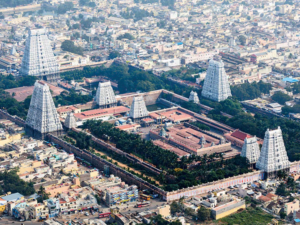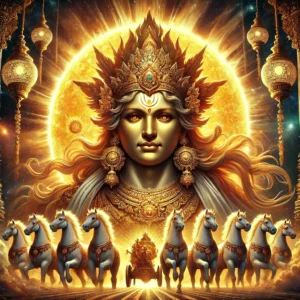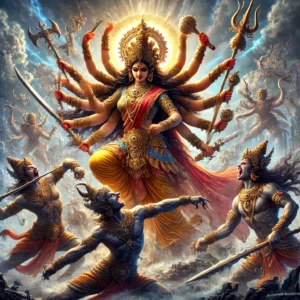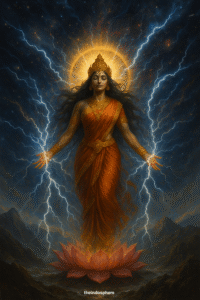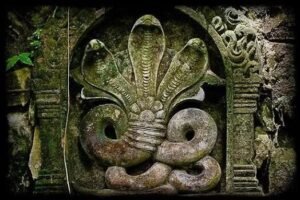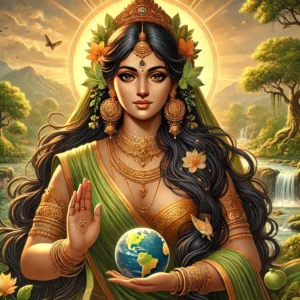In the Hindu Trimurti, Shiva plays the role of the destroyer—but that label barely scratches the surface. Shiva is not just a cosmic ender. He is the force of transformation, the ascetic yogi, the cosmic dancer, and for many, the Supreme Being. At once terrifying and compassionate, still and wild, Shiva embodies the paradox at the heart of the universe: that destruction is not an end, but a path to rebirth.
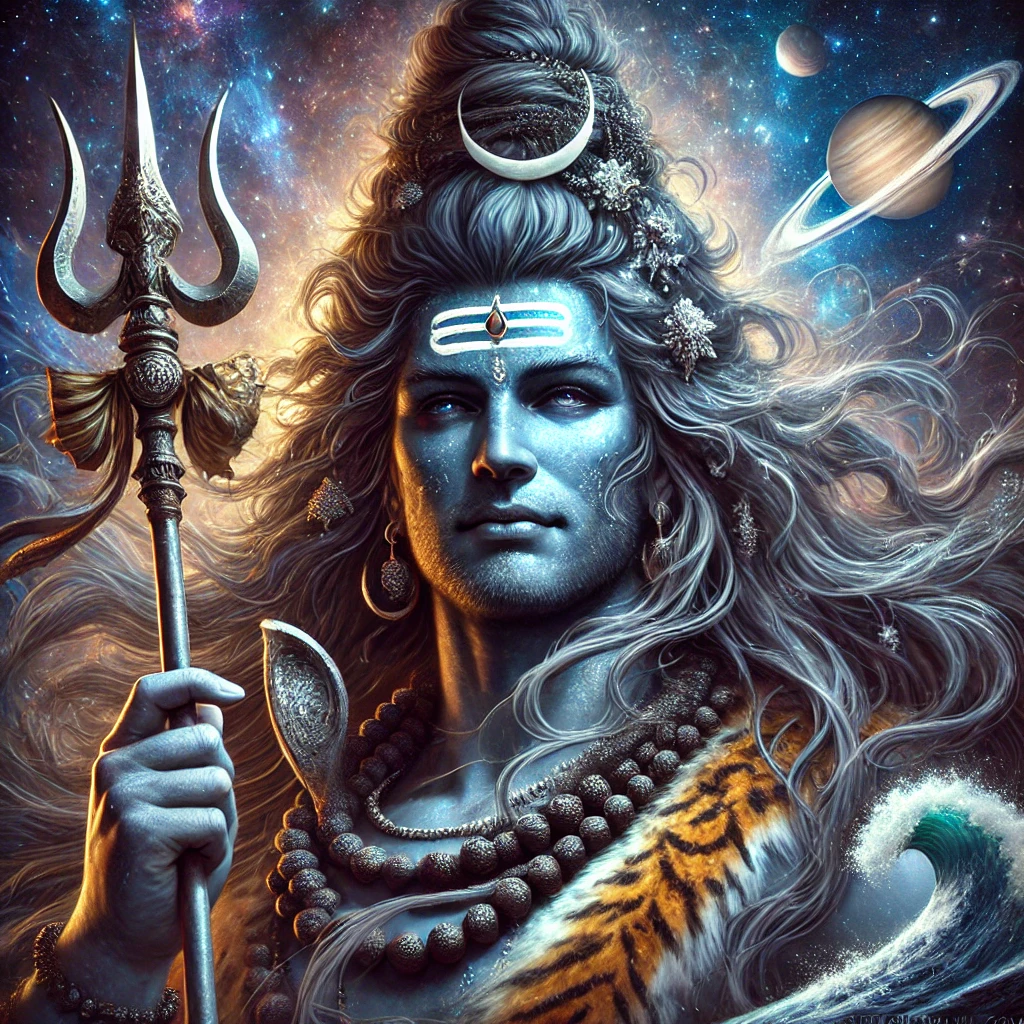
Shiva’s Role in the Trimurti
If Brahma creates the world and Vishnu preserves it, Shiva brings the cycle to a close—not out of wrath, but because change is necessary. Without destruction, there can be no renewal. He tears down the worn-out, the corrupt, the stagnant, so something better can arise.
But unlike the clinical role of “destroyer,” Shiva is deeply personal. His destruction is fueled by wisdom, not anger. He doesn’t act to harm but to clear the path for growth.
The Supreme Yogi
Shiva is the Adiyogi—the first yogi—and the source of yogic knowledge. Seated in deep meditation atop Mount Kailash, covered in ash and wearing a tiger skin, he embodies perfect detachment from the world. He is self-contained, free from desires, and entirely present.
Yet despite this ascetic image, he is also a householder. His consort Parvati, and their children—Ganesha and Kartikeya—symbolize balance. Shiva is a reminder that spirituality doesn’t require withdrawal from life; it can be lived fully, with presence and intention.
Iconography and Symbols
Shiva’s image is stark and full of meaning:
- Trident (Trishula) – represents the three gunas (creation, preservation, destruction) or mind, body, and intellect.
- Third Eye – symbolizes inner vision and the power to burn away illusion.
- Crescent Moon – marks control over time and the cycles of nature.
- River Ganga – flows from his hair, signifying purification and sustenance.
- Snake (Vasuki) – shows his mastery over fear and death.
- Ash-covered body – reminds that all material forms turn to ash; everything is impermanent.
- Nandi, the bull – his vehicle, represents strength, patience, and dharma.
Tandava: The Cosmic Dance
One of Shiva’s most powerful symbols is Nataraja, the Lord of Dance. In this form, he performs the Tandava, a cosmic dance that represents creation, preservation, and destruction in a continuous loop. Every movement of his body is symbolic:
- One hand holds fire (destruction)
- Another holds a drum (creation)
- A third offers protection
- A fourth points to his raised foot, symbolizing liberation
He dances on the dwarf of ignorance (Apasmara), crushing illusion beneath his feet. This image encapsulates the entire cosmic process in one motion: destruction is part of divine balance, and freedom comes through awakening.
The Bhairava and the Benevolent
Shiva’s moods swing between extremes. He can be Bhairava, fierce and terrifying, or Bholenath, the innocent and easily pleased god. This duality makes him accessible—both to those who seek divine awe and those who seek love and mercy.
His fierce forms include:
- Rudra – the wild storm god from the Vedas
- Bhairava – protector of the sacred and destroyer of evil
- Kala Bhairava – lord of time and death
But in most homes and hearts, Shiva is Shankara—benevolent, forgiving, and kind, easily moved by sincere devotion. His bilva leaves, water, and a simple chant of “Om Namah Shivaya” are enough to reach him.
The Linga: Formless Divinity
Shiva is often worshipped in the form of a linga, a smooth, cylindrical stone that represents his formless nature. The linga is not just a phallic symbol, as often misunderstood—it represents potential energy, the cosmic seed from which the universe arises.
This abstract representation highlights Shiva’s deeper reality: he is beyond form, beyond gender, beyond time. He is pure consciousness.
Shiva as Mahadeva: The Great God
To Shaivites, Shiva is not just one part of the Trimurti—he is the Supreme God (Mahadeva). In traditions like Shaivism, Kashmir Shaivism, and Advaita Shaiva Tantra, Shiva is seen as the absolute, from whom even Brahma and Vishnu originate.
In these philosophies, Shiva is both nirguna (without attributes) and saguna (with attributes)—at once impersonal and personal. Meditation on Shiva is meditation on the Self, the inner awareness that remains unchanged.
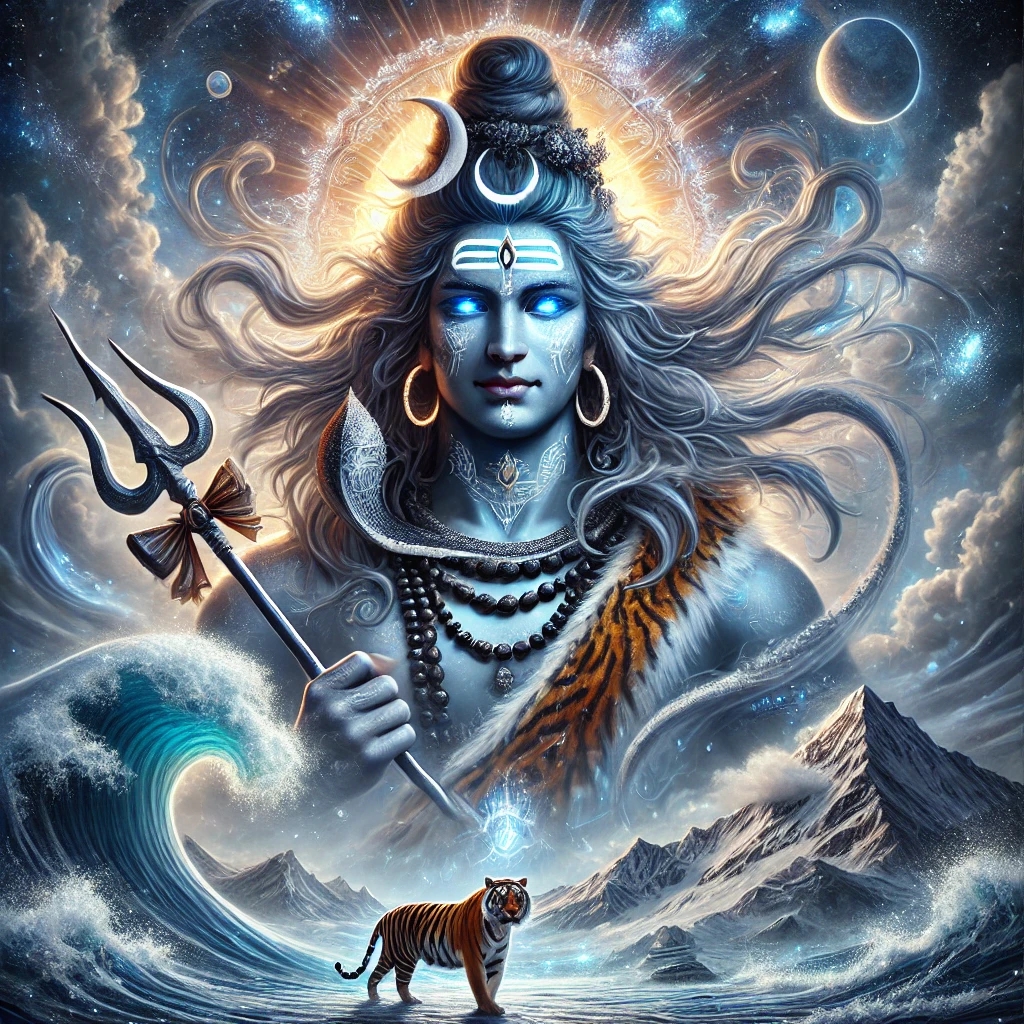
Shiva is not just the destroyer—he is the resetter, the renewer, and the realizer. He dissolves illusions, breaks patterns, and clears the way for deeper truths. He teaches that letting go is not loss, but liberation.
Whether as the silent yogi, the wild dancer, or the gentle father, Shiva shows us the power of detachment, the necessity of change, and the path to inner awakening. He doesn’t demand blind obedience. He invites deep understanding. In a world obsessed with building and clinging, Shiva reminds us: sometimes, you have to burn it down to wake up.

